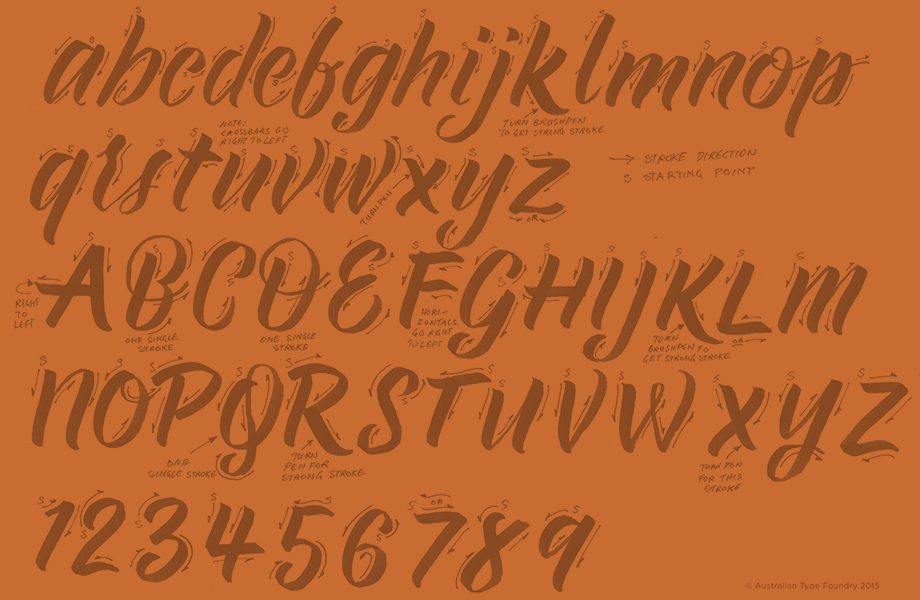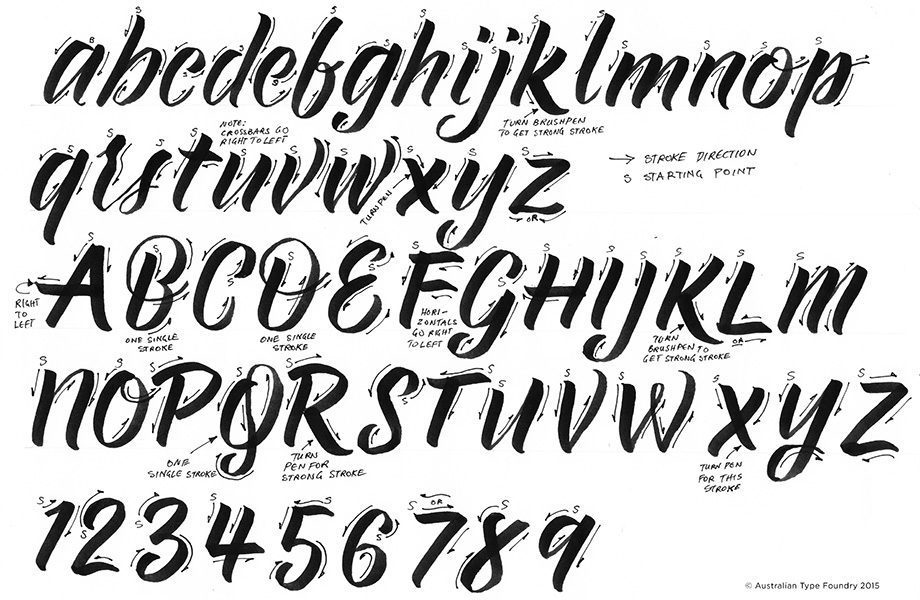Apparently, 10,000 hours makes you an expert. I have no idea how many hours I’ve done, but I can tell you that practice alone won’t do it. Here’s some sneaky tricks I have discovered along the way which make my lettering practice more economical:
Try to avoid using standard copy paper.
It’s very abrasive and can quickly ruin the tips of your brushpens. I find that my Tombow tips start to get furry and lose their clarity quite quickly when using copy paper. What’s the solution? Any paper with a coated or finished surface. Even butcher’s paper, despite it’s ugly grayness, is kinder to your brushpen tips. Bleedproof paper is probably the best, although it tends to be expensive.
Baking paper is excellent for lettering practice: it’s el cheapo, and it has the added advantage of being translucent. This means you can go over your previous brushpen work and improve the dodgy bits while keeping the good bits. Sooooo much better than expensive tracing paper (which you can save for the final client version). It tends to curl up due to being rolled that way, so roll it the opposite way around a cardboard tube and leave it for a while.
A word on flourishes.
Speaking of baking paper, here’s a useful tip for developing flourishes. If you’re anything like me, you never get your flourishes right first time. In fact, I usually have to do them dozens of times before I’m happy, and I end up rubbing out line after line until the paper is a mess. Instead, place some baking paper over it and do the flourishes multiple times. You can compare each version, and pick the best! Alternatively, draw the lettering in black ink, but the flourishes in pencil – then you can rub out the pencil mistakes without affecting the lettering.
Use reel-ends.
If you need a larger size of paper, try asking your local newspaper for reel-ends. These are the last 30 metres or so of paper on those giant toilet rolls they use on newsprint presses. Often, newspapers will sell them cheaply and the paper size is more than enough to practice with big, dripping brushes of ink.
Practice!
Lastly, here’s a practice sheet of brushpen letter shapes which I use in my workshops. It shows how I construct my letters with little arrows next to each stroke. Enjoy!


